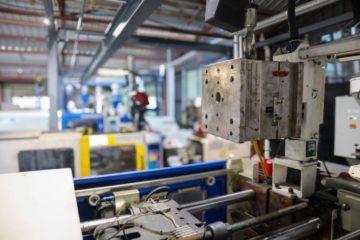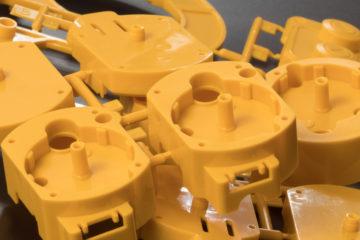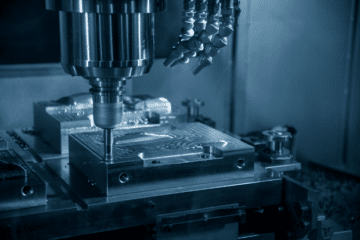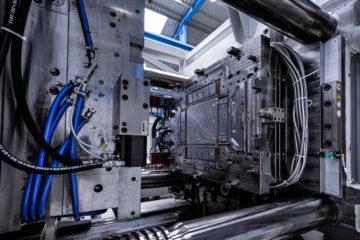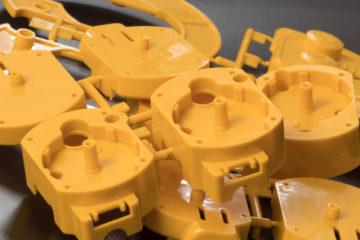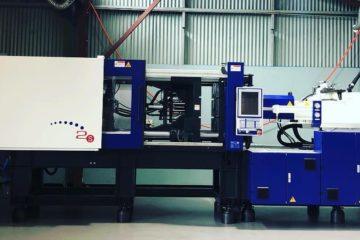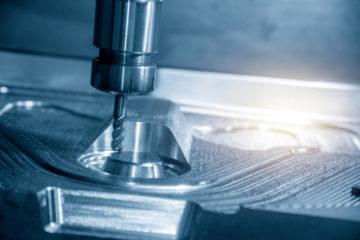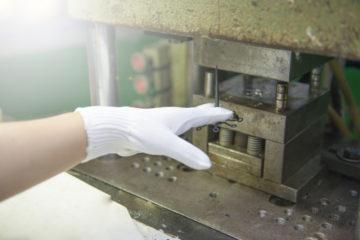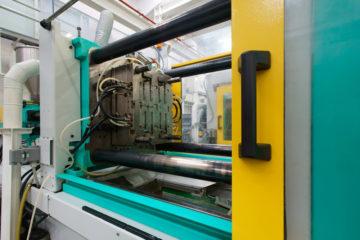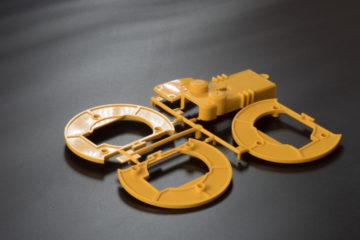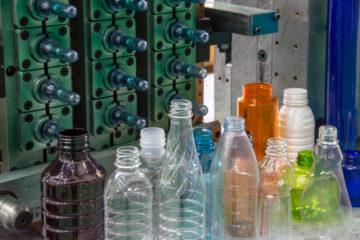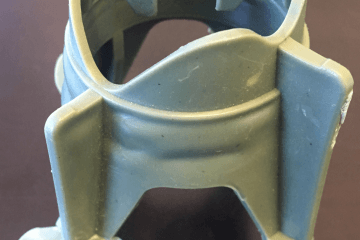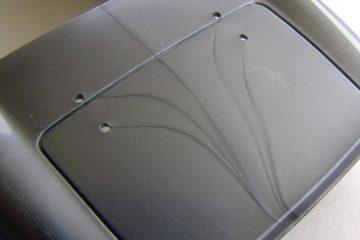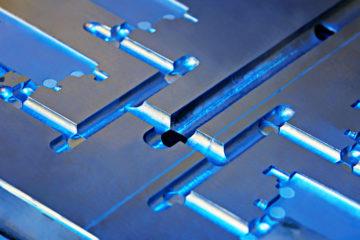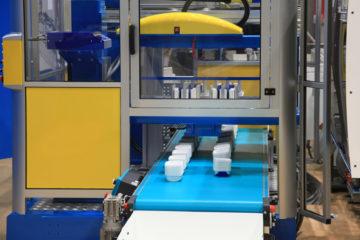
Gas Assisted Injection Moulding is a highly technical form of injection Moulding, that uses both plastic and gas (usually nitrogen) to fill an injection mould under pressure. The main benefit of this manufacturing process is that it’s ability to form hollow parts in the cycle time of injection moulding machines.
The basic process of Gas Assisted Injection Moulding is unsurprisingly very similar to regular injection moulding. The extruder barrel of an Injection moulding machine melts down raw pelletised plastic material, then injects this into an injection mould but only up until the mould is about 70% full. Then from a separate entry point, pressurised gas is injected in the mould as the part is cooling. This forces the still molten plastic up against mould walls, where it cools and hardens into your plastic product. The pressure is released from the gas, and then the mould is ejected like a regular injection moulded part.
This process forms a hollow, plastic injection moulded part. The only other way to achieve 1 whole hollow part in plastic in the single manufacturing method is either blow moulding or rotational moulding. Blow moulding is a high production, and highly capital-intensive manufacturing process, used most commonly in bottle making, and rotational moulding has a cycle time that is measured in minutes not seconds.
Gas Assisted Injection moulding offers a range of advantages in comparison to Injection Moulding. Firstly, there is the ability to mould hollow parts, but this hollowness also is a major weight saving, which in turn also saves on material costs. The hollow interior also lessens and sometimes removes flow lines as the plastic is now under constant pressure from the gas. In certain cases, it also cools faster as the gas and the hollow essentially doubles the surface area which allows the part to cool and harden. There is also usually less shrinkage as the thicker wall sections are hollowed out by the pressurised gas.
There are many common pitfalls when it comes to Gas Assisted Injection Moulding. Firstly, it is more complex and more expensive to set up than ordinary injection moulding. if the tooling price of injection mould shocks you, gas assisted injection moulds will blow you away. Also, by introducing gas into the moulding mix, this variable must be precisely tracked, managed and controlled. Without experienced machine operators and technicians, the moulding process could go disastrously wrong. The control of the gas also contributes to variable wall thicknesses, especially in tight corners and this is something you generally want to avoid. If you’re not sure if Gas Assisted Injection Moulding is for you, come in to our design office for a free, no obligation 1 hour meeting to discuss whether this is manufacturing process that’s right for making your part.
Subscribe to Our Newsletter
Get the latest news from Dienamics into your inbox







